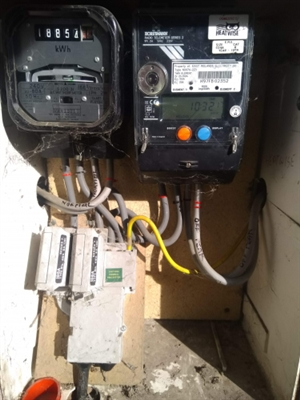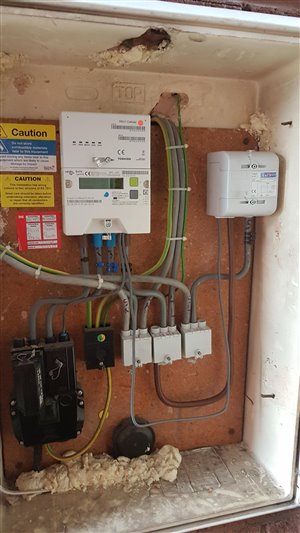EON have told me that I can’t have this old tariff anymore and so I agreed to move to their E7 tariff and have an E7 Smart Meter installed.
I currently have a single-phase incoming supply cable feeding two 100A fuses and two meters. One fuse feeds a normal rate meter and the other fuse feeds the off-peak meter. I don’t know why there are two meters fed by separate fuses and why the installation does not use the off-peak meter to record normal rate usage.
I discovered that the meter technician is not a qualified electrician and he didn’t know what to do so he phoned his supervisor who told him not to proceed with the meter change. I spoke to the supervisor on the phone and asked him why the one fuse cannot be removed and the remaining fuse can then supply the new E7 meter. He told me that I would have to get a qualified electrician to approve that which surprised me and I got the impression that these meter technicians don’t appear to know an awful lot.
The supervisor suggested that a 3-phase meter could be fitted retaining the two fuses and the meter is then fed by two cables although it is still a single phase supply. He also told me that the 3-phase meter would not be a Smart Meter. The meter technician was not qualified to do that but he could do the job himself so would phone me later to arrange it.
Another thing the supervisor told me was that I could only have four night storage heaters which I disagreed with explaining that I was proposing to have five which would add up to 17.22kw including the 3kw immersion element – equating to just over 70A and surely the limit is the total load and not the number? There is no electric shower fitted.
I don’t have a lot of confidence that these meter technicians know what they are doing and would have preferred a qualified electrician but EON don’t have any to do meter changes.
My question is does this sound ok or not please – can a 3-phase meter be fitted and fed by two cables from the incoming single-phase supply through the two fuses already fitted. This all sounds a bit strange so any help appreciated so thanks for any comments.



